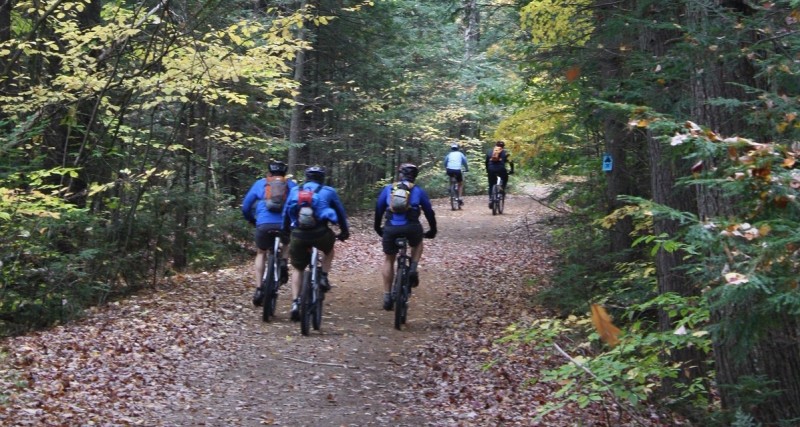
Downed leaves are potential pitfalls during cold weather cycling.
Winter may not be here yet, but it sure feels that way during a cold bicycle ride.
Across North America’s upper tiers and at high elevations, it’s time for cyclists to deal with layers and later starts as the leaves fall and twig season sprouts up.
Late autumn is a wonderful time for mountain biking in the dense forests as the sheltered woods provide protection from those increasing winds that give road riders headaches, literally.
The forest provides a seemingly unending tunnel of color, an absolute joy to travel through even as brights reds are replaced with the burnt yellows, oranges, and browns.
But precautions must also be taken. Hunting season is about and mountain bikers must decide whether and/or where to go while also wearing bright orange.
When those leaves fall, the trails get slippery. Leaves and pine needles cover those rocks and roots. Trail demons come alive, waiting for unsuspecting mountains bikers to fall into their traps.
The cover also can make it difficult to find trails. Use extra caution, particularly if riding in unfamiliar territory.
Mountain bikers and road riders also have to contend with decreasing daylight, and colder mornings.
Planning rides, whether in the woods or on the road, is essential, especially for those riding after work. Have those lights handy. That said, it also means there is greater opportunity for mountain bike night rides which are a great deal of fun, but frosty.
Colder temps mean more layers. Don’t bundle up. Instead, use that system of wicking starting with a long-sleeve base layer followed by a cycling jersey. A lightweight, loud-colored cycling jacket works wonders for warmth and wind resistance. Fleece vests are also helpful to throw in the mix too. Reflective vests help for being seen as shadows come into play.
Toronto’s Bicycle User Group Network has a wealth of information about cycling in the cold and commuting.
Among their suggestions:
- Consider using an inexpensive (beater) bike for the snow. Keep old bikes out of the landfill! They can be re-used and recycled.
- Keep your bicycle covered and protected from rain, snow, and slush.
- A reflective band around your right pant leg will increase visibility and prevent it from catching in the chain.
- Remember to replace lost fluids—you will get thirsty in the cold.
The Bicycle Commuters of Anchorage also have some good tips.
- Bikes rarely slip when they are going in a straight direction. Take care on corners.
- Slow down when you are approaching an area you suspect may be icy. Be prepared to take your foot off if the bike starts to tilt.
- Be prepared for bumps and transitions, as they can cause you to loose traction.
- When approaching a stopping point that is potentially slick, for example an intersection, take care when putting your foot down. Sometimes while riding it is easy to forget the underlying surface can be slippery.
Bike pants and tights are a good idea when the temp goes below your comfort zone, and can be peeled off on those Indian summer days (providing you have biking shorts underneath). Arm and leg warmers are also options.
Ditch the low-cut socks and make them higher. Some riders like booties that cover their shoes for warmth. Consider a hat under your helmet when it gets colder, and long-fingered bike gloves.
All help to enjoy riding when it’s frosty.
Images by Marty Basch
 Your Privacy Choices
Your Privacy Choices

 The
The